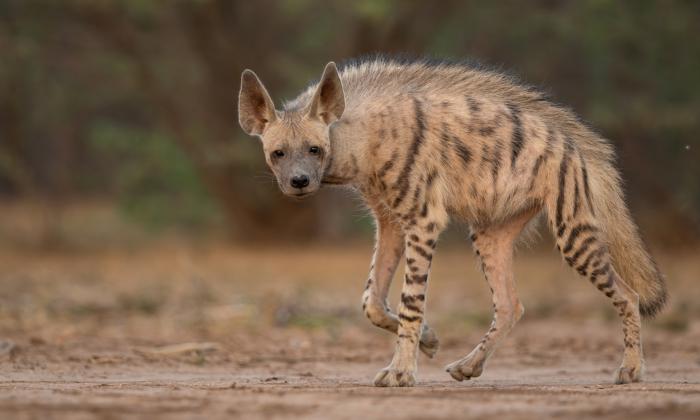Two months in the searing summer heat in the Indian desert finally paid off for this wildlife photographer, who was rewarded with a series of rare, intimate shots of a striped hyena in its natural habitat.
Photographer Hardik Shelat, 36, lives in Ahmedabad in the Indian state of Gujarat. He spent two months in early summer visiting his home state’s Little Rann of Kutch desert daily, patiently awaiting a daytime appearance of the lesser spotted striped hyena, after having the rare species on his wish list for two years.
“To spot them is rare because they live in dense dens with multiple entries,” Mr. Shelat told The Epoch Times. “They are nocturnal mammals and generally active at night; they are scavengers.
“[T]o spot them and click them in daylight, this is the rarest of the rare.”

To get this special shot, Mr. Shelat had to drive more than 300 kilometers (186 miles) into the deep desert for the hyena den at more than 46 degrees Celsius (approx. 115 degrees Fahrenheit) with heat waves in the desert.
This was a challenging endeavor since he had to cover his full body to protect himself from the heat and he also needed to stay hydrated.
After two long months spent waiting for the hyena for up to six hours per day, Mr. Shelat finally “got lucky” and got the shots he wanted.

“In wildlife, patience is the key factor, and of course multiple attempts, but without patience you will get nothing,” he said.
For the past two years, Mr. Shelat has been observing the behavior of hyenas. He has spent more and more time near hyena dens and has been watching when they sleep, when they come out, and how they search for food during the night.
“While observing them, I make sure they don’t get disturbed by our presence and cannot watch us, so that they can roam around their den and spend their time when it’s dark, as their day starts when our day ends. ... You have to understand the behavior of the mammals and birds and [their] activities to capture them,” he said.

Succeeding where other photographers have tried and failed, Mr. Shelat shared his rare hyena photos on social media where many have liked and shared his work. The photographer is using his platform to promote respect for wildlife and nature.
A Gujarat University graduate and self-taught photographer, Mr. Shelat works for the ICICI Bank when he is not taking photos. For his shots of the striped hyena, he used a Canon 7D Mark II camera and Canon 500mm lens. He said he only uses Lightroom for routine, minor post-processing such as to convert raw images to jpeg format.

“I always click wildlife and nature in proper natural light, sunlight only, and I never use artificial light while clicking nature or birds or animals,” he said.






